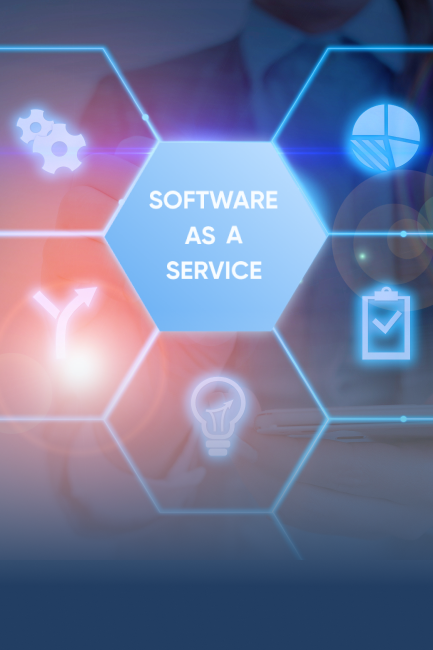What challenges arise when integrating SaaS applications with existing IT infrastructure?
September 28, 2023

In today's business landscape dominated by digital transformation, Software as a Service (SaaS) has emerged as a game-changer. SaaS, a subset of cloud computing, offers enterprises cost-effective, scalable, and flexible solutions.
However, the enterprise software SaaS integration presents various challenges, which this article explores while providing strategic solutions, drawing upon practical insights from IT service companies such as WEZOM.
1. The intricacies of SaaS integration
SaaS integration involves incorporating cloud-based applications into an organization's existing IT ecosystem. The goal is to improve data flow, eliminate information silos, and enhance overall productivity, making it an essential aspect of modern business operations. But, dealing with multiple authorities when integrating SaaS applications adds a layer of complexity, presenting various integration challenges.
2. Key challenges in SaaS integration
2.1 Security concerns
The increasing adoption of SaaS solutions has coincided with a rise in software as a service security risks. Businesses must tackle data breaches, unauthorized access, and various other cyber threats that could compromise sensitive data.
2.2 Lack of customization
One significant challenge of SaaS applications is that they often offer limited customization, inhibiting them from fully meeting specific business needs. This lack of customization can lead to inefficiencies, hampering productivity.
2.3 Compatibility issues
A common SaaS integration challenge is ensuring compatibility between SaaS applications and existing infrastructure. Compatibility issues can cause data inconsistencies, decreased efficiency, and user frustration, creating more implementation issues.
2.4 High switching costs
The process of transitioning from traditional in-house software to SaaS solutions involves high switching costs. Expenses include data migration, employee training, and potential operational disruptions during the transition phase.
2.5 Data control and privacy
The transfer of sensitive data to a third-party SaaS provider raises concerns about data control and privacy. These issues are related to potential breaches of data protection regulations and unclear data ownership policies.

3. Overcoming the challenges of SaaS integration
3.1 Strategies and solutions
To address why SaaS integration is hard, businesses can implement these strategies:
- Conduct a comprehensive assessment of the existing IT infrastructure to identify potential compatibility issues before SaaS implementation.
- Choose SaaS providers that offer robust API integration options, facilitating seamless data exchange.
- Opt for customizable SaaS solutions to meet specific operational requirements effectively.
- Enhance data security by implementing multi-factor authentication and encryption protocols.
- Work with IT experts to develop a detailed migration plan to minimize disruptions during the transition.

3.2 WEZOM's and SDA’s strategies and solutions
We understand the challenges of integrating SaaS applications into existing IT systems. Our solutions include:
- Collaborating with businesses to establish clear goals for SaaS integration.
- Conducting a comprehensive cost-benefit analysis, balancing long-term advantages against initial costs.
- Ensuring secure and accurate data transfer during the data migration phase.
- Prioritizing scalability in our SaaS solutions to accommodate business growth.
- Offering continuous technical support and comprehensive training to ensure a smooth user transition.
- Facilitating transparent communication with stakeholders and maintaining detailed records for efficient coordination.
Integrating SaaS applications into existing IT infrastructure can be challenging due to issues such as security risks, limited customization, compatibility issues, high switching costs, and data control concerns. However, with a strategic approach and by using integrated SaaS software, these challenges can be effectively managed.
We guide your organization towards a more efficient and innovative future, providing bespoke strategies and solutions for seamless SaaS integration. Understanding and addressing the challenges associated with SaaS integration is critical for businesses aiming to fully leverage the benefits of cloud computing.



